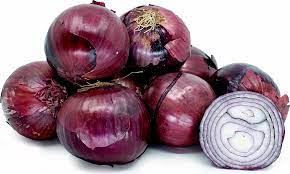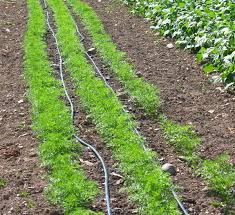Chapman and I went on a road tour of farms and processing plants in 2000, and I remember one dude saying we blanch all the produce except onions because they’ve never had an outbreak.
According to the U.S. Food and Drug Administration, between June and October 2020, federal and state agencies investigated a Salmonella Newport foodborne illness outbreak associated with consumption of red onions from the Southern San Joaquin Valley and Imperial Valley in California. The outbreak, which caused 1,127 reported domestic illnesses and 515 reported Canadian cases, is the largest Salmonella outbreak in over a decade. This outbreak is also remarkable because the food vehicle, whole red onions, is a raw agricultural commodity that had not been previously associated with a foodborne illness outbreak.
The U.S. Food and Drug Administration (FDA), alongside state and federal partners, investigated the outbreak to identify potential contributing factors that may have led to red onion contamination with Salmonella Newport. While the Salmonella Newport outbreak strain (specific whole genome sequence [WGS]) was not identified in any of the nearly 2,000 subsamples tested, a total of 11 subsamples (10 water and 1 sediment) collected near one of the growing fields identified in the traceback were positive for Salmonella Newport, representing a total of three different genotypical strains (unique WGS patterns). Although a conclusive root cause could not be identified, several potential contributing factors to the 2020 red onion outbreak were identified, including a leading hypothesis that contaminated irrigation water used in a growing field in Holtville, California may have led to contamination of the onions.
While our investigation did not occur during any harvesting activities, visual observations of the implicated red onion growing fields suggested several plausible opportunities for contamination including irrigation water, sheep grazing on adjacent land, as well as signs of animal intrusion, such as scat and large flocks of birds which may spread contamination. Similarly, the investigation did not occur while packing activities were ongoing. However, visual observations and records review of packing house practices confirmed numerous opportunities for spread of foodborne pathogens such as Salmonella, including signs of animal and pest intrusion as well as food contact surfaces which had not been inspected, maintained, cleaned, or sanitized as frequently as necessary to protect against the contamination of produce. Thomson International Inc. cooperated with FDA throughout the investigation and is continuing to engage with FDA on the agency’s findings and recommendations.
Notably, Salmonella isolates from two sediment subsamples and two water subsamples collected during this investigation were found to be genetically related by WGS to clinical isolates from 2016 and 2018 foodborne illness outbreaks (Salmonella Muenchen and Salmonella Montevideo, respectively) associated with consumption of sprouts. This may be indicative of human pathogen persistence and distribution in this growing region (a concentrated area of seed for sprouting production), which could pose a risk of contamination for any produce commodity. FDA issued an assignment to follow-up at the associated firms. Sprouts are not a food vehicle of interest in the 2020 Salmonella Newport foodborne illness outbreak.
We urge growers to conduct risk assessments that include evaluation of hazards that may be associated with adjacent and nearby land uses—especially relating to the presence of livestock and wildlife and the potential for runoff into growing fields or water sources—and implement risk mitigation strategies where appropriate. FDA recognizes the interconnection between people, animals, plants, and their shared environment when it comes to public health outcomes, and we encourage collaboration among various groups in the broader agricultural community (e.g., produce growers, those managing animal operations, state and federal government agencies, and academia) to address this issue.
This document provides an overview of the traceback investigation, subsequent on-site investigation, and factors that potentially contributed to the contamination of red onions with Salmonella Newport.
Factors potentially contributing to the contamination of red onions implicated in the summer 2020 outbreak of Salmonella Newport
13.may.21
FDA











